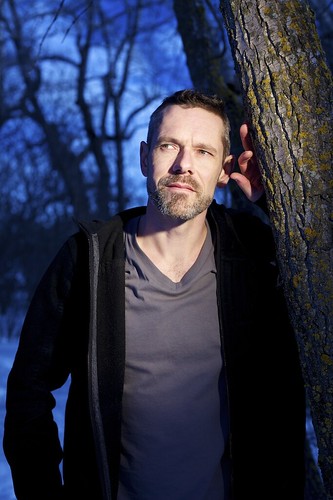I had a vision in my head - something dramatic. I wanted trees and sky. I wanted to turn day in to night.
The simplest way to turn day in to night is to speed up the shutter to cut ambient. The mantra repeats in my head - shutter controls ambient, aperture controls flash. Got it.
Once I get to my location and set up my gear the first thing I do is dial in the exposure. As it turned out 1/2500th of a second underexposed ambient by about one and one third stops, step one for creating the dramatic effect I was seeking. Step two is to set the camera's white balance to tungsten. This will turn daylight blue giving the image a night time feel. The final step is to make sure my flash is gelled with a full cut of CTO (colour temperature orange). The CTO gel changes the day light output of the flash to tungsten to match my camera's white balance setting so what ever gets hit with the light from the flash will be colour correct.
Of course shooting at 1/2500th of a second puts me way above my camera's max sync speed of 1/200th. This is dealt with by putting the Canon 580EX II flash in high-speed sync mode and connecting it to the camera via a long ETTL cable. The downside to high-speed sync is that is eats up a lot of flash power. To compensate I keep my aperture as wide open as possible, use a bare flash (with the exception of the gel) and keep the flash really close to my subject.
A few iterations to get the flash output right, a few poses later and I have my dramatic portrait. Easy peasy.

OK, it wasn't all "easy peasy". The worst part of the session was checking the LCD on the back off the camera to make sure focus, pose and exposure were all correct. Exposure is reasonably easy to check because the histogram tells most of the tale and blinking highlights (or not) fill in the rest. Checking for sharp focus and making sure I have a decent look on my face is harder to see under bright ambient light. To have any chance at seeing what was on the LCD I kept having to remove my jacket, toss it over my head and the camera to cut the excess light. It worked pretty well but it was a pain in the butt going back and forth every few shots. A loupe certainly would have simplified the task.
If you are interested in seeing how simple the set up was you can see it here.
Keep shooting.


No comments:
Post a Comment